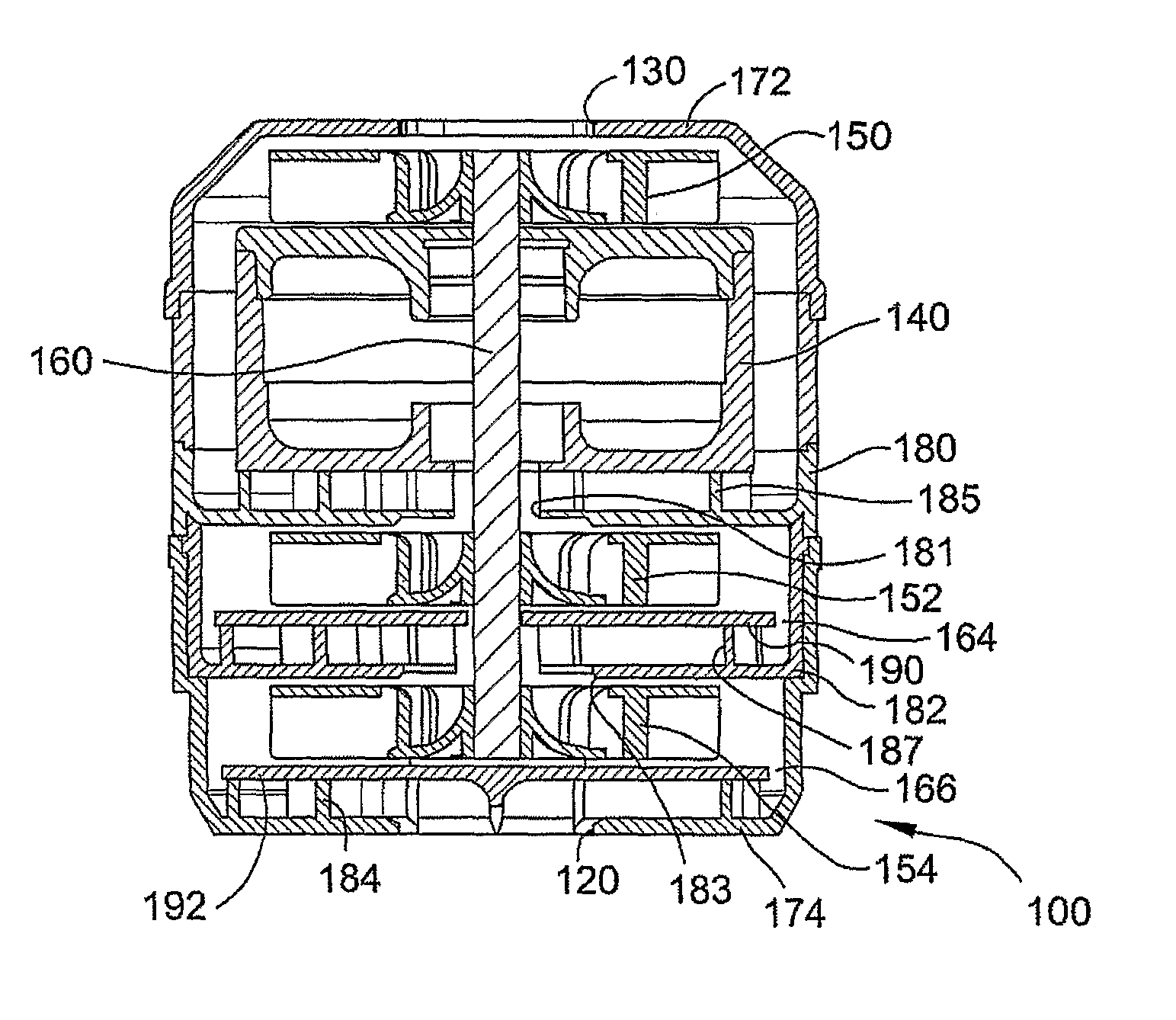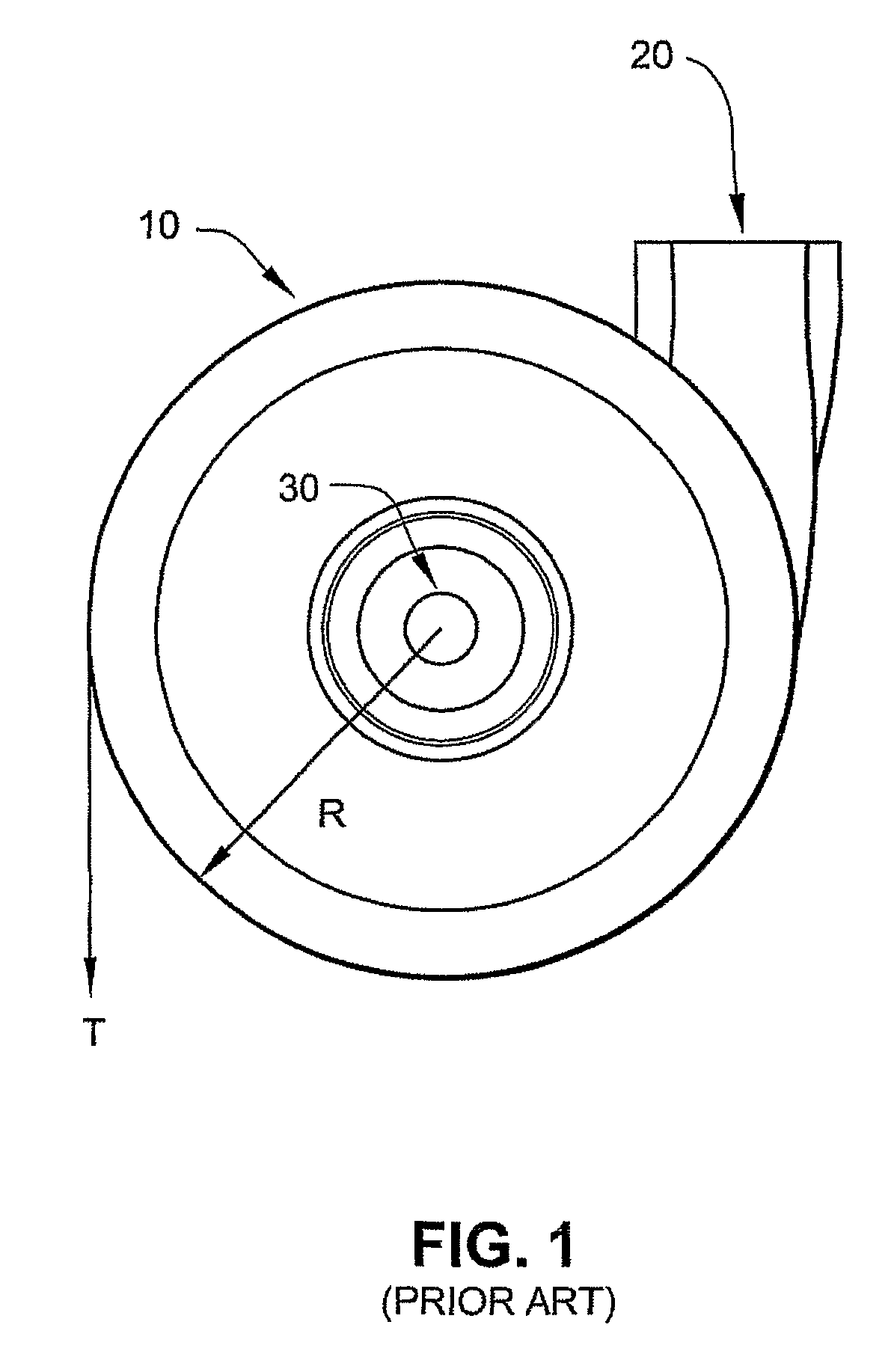Compact low noise efficient blower for CPAP devices
a compact, low-noise technology, applied in the direction of positive displacement liquid engine, piston pump, liquid fuel engine, etc., can solve the problems of long life, inability to meet the needs of the user, complex design process, etc., to achieve low motor speed, fast response time, and large pressure delivery
- Summary
- Abstract
- Description
- Claims
- Application Information
AI Technical Summary
Benefits of technology
Problems solved by technology
Method used
Image
Examples
Embodiment Construction
[0045]Aspects of the invention will be described herein in its application to non-invasive ventilation (NIVV) treatment apparatus (e.g., positive airway pressure (PAP) devices or flow generators), such as CPAP, mechanical ventilation and assisted respiration, but it is to be understood that the features of the invention will have application to other fields of application where blowers are used, such as vacuum cleaners, cooling equipment in computers and HVAC devices such as those found in buildings and vehicles.
[0046]In this specification, the words “air pump” and “blower” may be used interchangeably. In this specification, the phrase “stationary part” will be taken to include “volute”. The term “air” will be taken to include breathable gases, for example air with supplemental oxygen. It is also acknowledged that the blowers described herein may be designed to pump fluids other than air.
[0047]In this specification, the word “comprising” is to be understood in its “open” sense, that...
PUM
 Login to View More
Login to View More Abstract
Description
Claims
Application Information
 Login to View More
Login to View More - R&D
- Intellectual Property
- Life Sciences
- Materials
- Tech Scout
- Unparalleled Data Quality
- Higher Quality Content
- 60% Fewer Hallucinations
Browse by: Latest US Patents, China's latest patents, Technical Efficacy Thesaurus, Application Domain, Technology Topic, Popular Technical Reports.
© 2025 PatSnap. All rights reserved.Legal|Privacy policy|Modern Slavery Act Transparency Statement|Sitemap|About US| Contact US: help@patsnap.com



